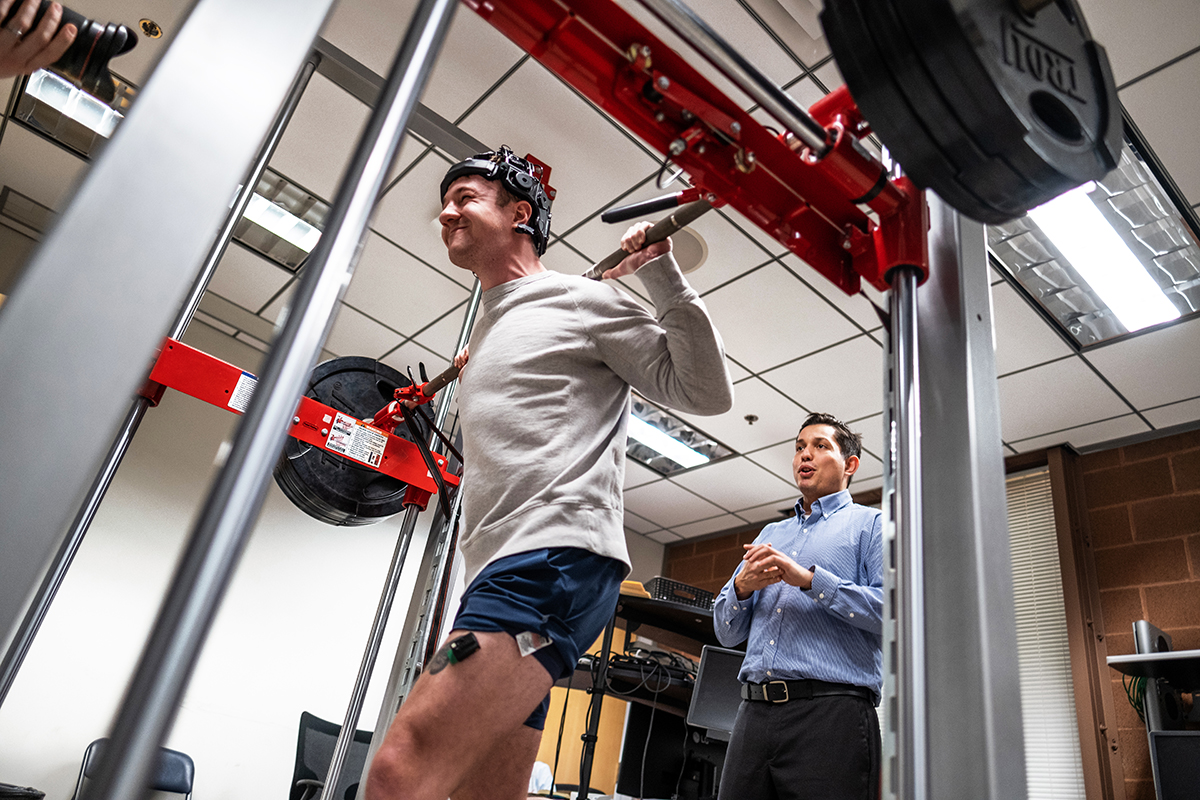Exploring Ohio State’s modern learning spaces
Interactive and immersive learning spaces enhancing teaching and learning

Before she started at Ohio State, Sophie Kussman toured Sullivant Hall “classrooms” used for Department of Dance classes and intelligent-stage and motion-capture setups.
The building, between High Street and the Oval, is almost a decade older than the ’Shoe, which turned 100 last year. But the reinvented learning spaces inside make room for today’s experimenting, collaboration and learning by doing.
After all, it’s a truth universally acknowledged at Ohio State that you can learn only so much by listening to teachers describe something. Modern classrooms across our campuses are designed for hands-on learning.
Kussman, a fourth-year majoring in dance and art history, takes a West African Movement class in Sullivant. “Being able to step into a space where all the information is so unknown to me and really delve into a culture that is not my own in the most respectful way possible, that has been so unique,” she says. “[This space] was huge in making me want to come here.”
A bounty of work-world resources

Emily Flaherty, a third year in chemical engineering, says the same thing about the building best known as CBEC, found on Woodruff Avenue midway between Ohio Stadium and High Street. From the lobby, you can peer down into The James and Patricia Dietz Unit Operations Laboratory, a classroom two stories deep to fit all of the big equipment.
“You name it, there’s pretty much all disciplines of chemical engineering here,” says fourth-year Cole Pinkerman.
His class conducts chemical transformation experiments on fixtures such as distillation and fluidization columns taller than he is. The point is to go beyond diagrams on paper and gain confidence with the actual tools used in co-ops, internships and future jobs.
Flaherty feels proud to be working in the space she toured before coming to Ohio State.
“Now I can say that I actually get to do work in the lab,” she says.
Thoroughly measuring the human body

Starting when she was a grad student, Madison Kackley did research in the Physical Activity and Education Services (PAES) building, and now that she is a full-time scientist, she works in the basement.
She wouldn’t have it any other way.
The building, southeast of Ohio Stadium, is packed with state-of-the-art spaces to study exercise physiology, behavioral medicine, fitness training and more. Tools include exercise machines and free weights, a sensory deprivation tank and full-body scanners that measure bone density and fat percentage.
“Sometimes listening to a lecture, you don’t take everything in,” says Kackley, who earned a master’s degree from Ohio State in 2018 and a PhD in 2021. “But with the hands-on experience where you’re in the trenches, you can create conceptual thoughts on your own and expand not just your academic knowledge, but the applied aspect of your future career.
“That is what Ohio State is really, really good about,” she says.